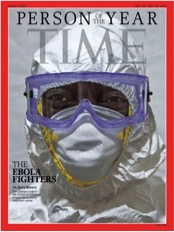Ebola Remembered: A report from this year’s American Society of Tropical Medicine and Hygiene annual meeting
The annual meeting of the American Society of Tropical Medicine and Hygiene (ASTMH), held this year in Philadelphia from October 25 through 29, gathers the global leaders in tropical medicine to discuss recent advances and challenges in the field of global health. With the recent Ebola outbreak in West Africa nearing its long-awaited end — the World Health Organization (WHO) officially declared Sierra Leone Ebola-free just one short week after the meeting ended — memories of the outbreak and its toll on the global health community weighed heavily on the minds of attendees. But rather than allowing the tragedy to impede progress, this year’s ASTMH meeting was used as an opportunity to reflect on the lessons Ebola had to teach and to honor those we lost.
An entire session of the meeting was dedicated to honoring the healthcare workers who sacrificed their lives to treat Ebola patients. While the fatality rate of Ebola in the most recent outbreak was around 40 percent for patients, it was a staggering 58 percent among infected healthcare workers. The WHO reports there had been 881 Ebola cases and 512 deaths among healthcare workers in the affected West African countries, Sierra Leone, Liberia and Guinea as of late August. As a result of these brave doctors, nurses, and technicians, around 17,000 people survived Ebola infection during the last year.
“By a show of hands, how many of you either deployed to the field to help with the Ebola epidemic or worked from your office on Ebola in the last year?” asked the session’s moderator, Dr. Barbara Knust of the Centers for Disease Control and Prevention. The ballroom was a sea of raised hands, with those who had no personal connection to the outbreak forming the clear minority. There were audible reactions tempered with sadness from the audience as they recognized the images of fallen colleagues in photos displayed across a screen on the main stage.
Chief among those remembered was Dr. Sheik Humarr Khan, the chief physician of the Lassa Fever Research Program at Kenema Government Hospital in Sierra Leone and the heart of the region’s Ebola response. Dr. Khan was remembered in a moving speech by his brother, Sahid Khan.
“He was always thinking about other people,” said Mr. Khan of his brother, “and that’s because he grew up in a household where it was naturally instilled in us that you don’t just care about yourself; you care about your neighbor.” Dr. Khan succumbed to Ebola infection on July 29, 2014 while fighting Ebola in Sierra Leone.

There was also much retrospection on control efforts led by those who had run Ebola Treatment Centers (ETCs) in affected areas. Dr. Jerry Brown of Eternal Love Winning Africa Hospital, Monrovia, Liberia, and Dr. Christopher Mores of Louisiana State University painted a picture of life at these centers, highlighting the major challenges healthcare workers faced at these ETCs, and how they were overcome. Such challenges ranged from the obvious, like the need for quality Personal Protective Equipment (PPE), to the not-so-obvious, like how to address the psychological needs of Ebola patients.
As show in the image at left, healthcare workers wore PPE, masking them from head to toe, in an effort to prevent transmission of Ebola from patient to provider. As a result, patients were unable to see the face of their caretakers. Dr. Brown recognized the necessity of giving patients a face to put to the names of the people who saved their lives.
“We interacted a lot with our patients, but at the time of discharge they would ask, ‘Who is Dr. Brown?’” Dr. Brown recalled during his talk. “I would stand before them, but no one knew me.” To solve this problem, each doctor, nurse, and technician who worked in his treatment center had their name and photo displayed on their protective gear so that their patients could see the face of the person working behind the mask.
Meeting attendees had a chance to learn first-hand from the scientists and providers that were at the front lines of the outbreak outside of the academic sessions. A large white tent standing in the conference center grand hall housed an interactive exhibit where conference attendees could experience what it’s like to work in an Ebola Treatment Unit.

Inside this exhibit, veterans of the outbreak guided participants through the process of properly donning and doffing the PPE required for safe interaction with Ebola patients. Once suited up in the full complement of protective gear, participants attempted to communicate with each other using only white boards and hand gestures, and put their dexterity to the test by playing Jenga while wearing two layers of gloves. These tasks, while trivial for many in average scenarios, proved to be surprisingly difficult while covered in plastic from head to toe. The struggles to perform basic tasks like communication and mobility underscored the immense challenges faced by healthcare workers attempting to provide medical care while wearing PPE.
The most devastating Ebola outbreak the world has seen is nearing its end, with only a few cases lingering in Guinea and Liberia, but its impact will be felt by healthcare workers, global health scientists, and above all the West African people, for many years to come. The memory of the tragedy is still fresh in many minds, but the devastation the disease wreaked in the last year exposed gaps and weaknesses in health systems and disaster response and coordination. The 2015 ASTMH meeting demonstrated the dedication of the global health community to preventing another outbreak of this scale through careful retrospection on the successes and failures of control efforts during the last year and a half. Thus, the community honors those it lost in the best way— by continuing the noble work for which they gave their lives.
References
